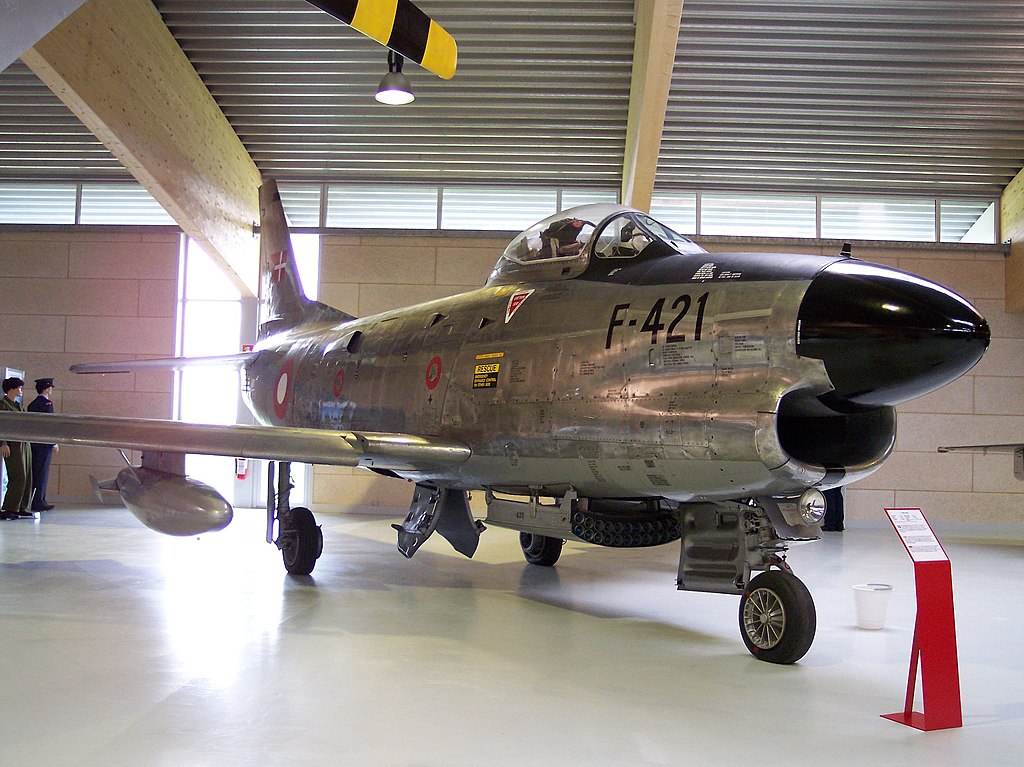The North American F-86D Sabre, often referred to simply as the “Sabre Dog,” was a pivotal aircraft in the evolution of jet-powered interceptors during the Cold War era. Born out of the iconic F-86 Sabre lineage, the F-86D represented a significant departure from its predecessors, featuring a distinct radar-equipped nose and a focus on all-weather interception capabilities.
Origins and Development
The F-86D emerged in response to the evolving threat of Soviet long-range bombers during the early 1950s. North American Aviation, building upon the success of the F-86 series, endeavored to create an interceptor variant capable of operating in all weather conditions, day or night. The result was the F-86D, a radical redesign featuring a larger fuselage to accommodate sophisticated radar equipment and an expanded internal fuel capacity.
Design and Features
The defining characteristic of the F-86D was its “all-weather” capability, made possible by the inclusion of a Hughes E-4 fire control system and AN/APG-36 radar housed in the enlarged nose section. This radar allowed the F-86D to detect and intercept enemy aircraft in adverse weather conditions and at night, significantly expanding its operational envelope.
Armament-wise, the F-86D typically carried twenty-four 2.75-inch (70 mm) “Mighty Mouse” Folding-Fin Aerial Rockets (FFARs) in its internal weapons bay, providing a potent anti-aircraft capability. While it lacked the gun armament of earlier Sabre variants, the F-86D’s focus on missile-based interception reflected the changing nature of aerial combat in the jet age.
Operational History
The F-86D Sabre entered service with the United States Air Force (USAF) in 1951 and quickly assumed a vital role in America’s air defense posture during the Cold War. Deployed to air bases across North America and Europe, F-86D squadrons stood ready to intercept and neutralize any potential threat posed by Soviet bombers or reconnaissance aircraft probing Western airspace.
While the F-86D never saw combat in its intended interceptor role, it played a significant part in deterring potential adversaries and maintaining the integrity of NATO airspace throughout the Cold War. Its advanced radar and all-weather capabilities made it a formidable opponent, even against more modern Soviet aircraft of the era.
Legacy and Influence
The F-86D Sabre’s legacy extends beyond its service with the USAF. Many F-86D variants were exported to allied nations under various military assistance programs, bolstering the air defense capabilities of countries such as Norway, Japan, and Italy. Additionally, the technological innovations pioneered in the F-86D paved the way for future generations of interceptor aircraft, influencing the design of subsequent models like the F-102 Delta Dagger and the F-106 Delta Dart.
Today, the F-86D Sabre remains a celebrated chapter in aviation history, remembered for its role as a Cold War sentinel and for its contributions to the evolution of all-weather interception capabilities. While newer and more advanced aircraft have since taken its place, the Sabre Dog’s distinctive silhouette and technological advancements continue to evoke a sense of nostalgia and admiration among aviation enthusiasts worldwide.

